Many SSD readers are military or LE veterans and learned the tactical application of firearms while in uniform. Some of you same shooters have joined others who have never served to attend formal training courses presented by professional trainers. And while formal training is by far the best way to learn, it isn’t always accessible. Whether a shooter wants to acquire knowledge from a new trainer or reinforce lessons already learned from another, it becomes clear why training videos are so popular.
History
Training videos are hardly new. You may have seen the infamous Army training films from World War II and the military has continued to produce movies on a variety of subjects over the years. During the 1980s companies like Paladin Press began producing training videos in VHS format. In fact, you can still get the great Jeff Cooper’s Defensive Pistolcraft on DVD. Nowadays, they have become pretty hi-tech, produced with state of the equipment and edited with techniques found in hit movies.
Types of videos
Today, there are several options on the market offered by different companies. You have instructional videos from Daniel Defense, Magpul Dynamics, Panteao Productions, Thunder Ranch, Viking Tactics and yes, even Paladin Press is still in the business with each company offering their own interpretation of what an instructional video should be.
There are different formulas used by the various production companies. For instance, Magpul Dynamics has spent the most money per video title having gone so far as set up an in-house production company. On the opposite end of the spectrum you have Viking Tactics and Thunder Ranch. The important thing is not how much money each company spends on the instructional videos, but rather, how well the information is passed on to the viewer. Whether a company spends $200K or $2K isn’t important. It’s what you get out of the video that matters.
Another thing that is different about the various videos on the market is their presentation style. One method of instruction is to present a classroom setting on the range with the instructors addressing a range full of students. There are pros and cons to this. With this format, much attention is spent on getting the right camera angles on students and capturing the interaction between the them and the instructors. Depending on the students, they can sometimes be a distraction. On the flipside, you get to see the instructor interact with the students which might give you clues on whether to pursue attending a class. Remember that the end goal of an instructional video is to teach you techniques or pass along information about the given subject matter. Instruction isn’t about how Gucci someone looks on the range with all their kit. These guys aren’t movie stars, but they are rock stars.
The other approach to training videos is to feature the instructor addressing the viewer in a one-on-one setting. This removes the extra content normally associated with a video showcasing students and keeps the focus primarily on the instructor. Some like the format of a classroom environment while others instead prefer the one-on-one instruction.
Why use a video?
Should you try to learn tactical firearms manipulation solely from a video? No. However, can you learn a lot from a video. While there is nothing like a live instructor coaching you, the advantages of training videos are myriad.
For example, you can take it at your own pace. Many times, because of the size and schedule of a class, an instructor won’t be able to work on a technique over and over. Dovetailing on that concept, you can replay a technique over and over, slow it down, or even freeze frames. This gives you access to the instructor that you wouldn’t have even in a class, allowing you to customize the training experience a bit for yourself.
Additionally, you can learn from a new instructor or “try him out” before you invest the thousands of dollars it can cost to attend a formal course once you add up supplies, travel and lodging.
Entertrainment
While many are using tactical training videos to improve their fighting position, there are others who are looking for “entertrainment.” Yes, you read that right; “entertrainment.” Just as there are some students who attend classes for the “wow” factor, kind of like guys who attend fantasy baseball camp, there are those who buy videos to watch the pros. Unfortunately, some of these guys are going to think they are being trained while they sit there watching the video. Or better yet, they’ll critique the trainer from their couch.
If you are looking for the MTV factor, there are several reality shows that should hold your attention. Top Shot, Sons of Guns, One Man Army and some of the survival shows currently on the air provide entertainment.
What does the future hold?
Already, a new option is the ability to watch the training videos online via streaming video rather than on a DVD. Like video subscription services such as NetFlix, this new approach allows you to pay a subscription and pick and choose which instructors and which videos you want to learn from. The next logical step being able to take that training to the range via your iPad, iPhone, or Android device.
If you’ve played any hit video games you know, we are one step closer to interactive training systems based on popular gaming consoles. If anyone remembers the old FAST trainers or even older Weaponeer, then you can see that the only thing missing from low-cost interactive training is the interface. Devices that can be adapted to real weapons or purpose built training guns will be available. As training devices become more realistic, specialized apps or games will be developed that not only provide feedback on hits but also on other aspects of marksmanship. Perhaps such technology will get the enthusiast off the couch and help them make that transition from entertrainment to actual training.
Until then, just remember, there is entertrainment and there is actual training. If you are looking to be entertained, you should stick to the X-Box or reality television programs. Can you be entertained by watching a video of an instructor demonstrating shooting techniques? Sure, but if what you really want is to improve your knowledge and skill set, pick up a training video. Proficiency comes with hard work, not from sitting around watching someone else sweat on TV. Be safe, and make sure your weapon is safe when conducting dryfire practice of techniques. Follow the four rules of gun safety when training. Whether you have served in uniform or have learned tactical shooting from civilian trainers, tactical training videos are a great tool and serve as an excellent supplement to formal training.


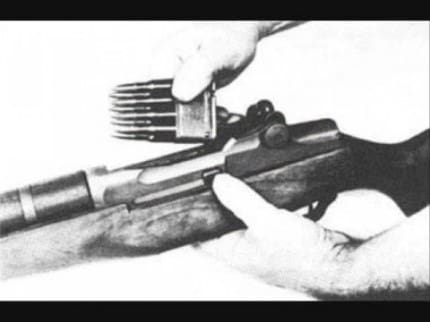
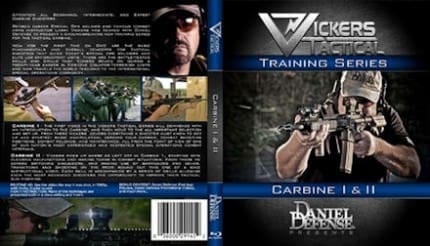
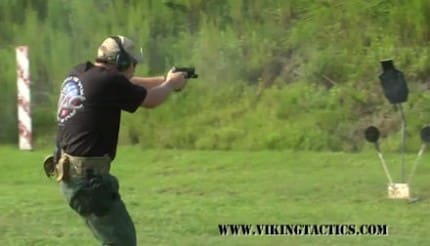
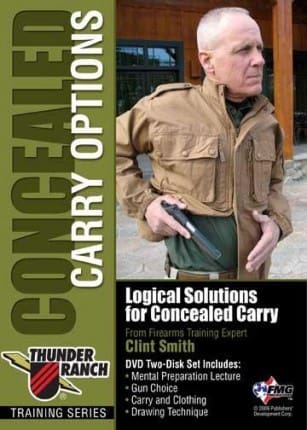
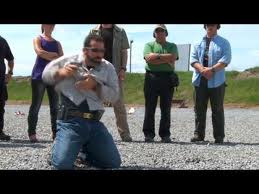
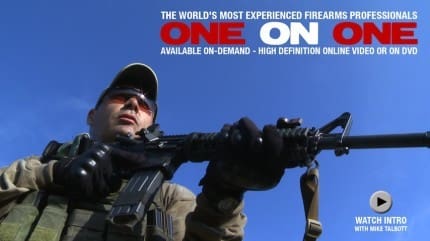

A lot of my friends think I’m a good shooter just because I went through Army Special Operations schools. The fact is, those schools were seriously lacking in shooting instruction, at least in the modern sense. I used videos to learn new modern shooting techniques and to sharpen my knowledge. As far as shooting is concerned, Iam almost entirely self taught. I still give credit to the Army for giving me a good understanding of the fundamentals, and without that I wouldn’t have the skill needed to teach myself. But, videos have played a big role in my understanding of more “advanced” skills.
With regards to one on one instructional videos, which are really good? I have watched Magpul and Tactical Response, Thunder Ranch. What are people’s opinion for best value
While I definitely wouldn’t expect to learn a whole lot from watching reality shows I do think that if you watch the participants carefully that you can learn a thing or two from them. One thing I’ve picked up from watching Top Shot, but have yet to try, is ditching the Weaver stance in favor of the Isosceles stance since pretty much all of the shooters on the show use it. Aside from that and maybe how they move I wouldn’t expect to pick up much more and I do watch for just entertainment.
As far as tactical training goes, are there any good options out there for people on a limited budget and living in SoCal, where none of the big name tactical training facilities seem to be. Of course, for me it would have to be focused on pistol training since the closest thing to a tactical rifle I own is full sized M1A.
That isocoles is great for the one way range. The modified weaver is for gunfighting.
That show is a game show.
I think it’s the other way around…Isosceles puts your body armor/plate towards your enemy while Weaver exposes your side/less protection.
That being said, Top Shot is indeed a game show, not tactical training.
A true Isoceles squares the body to the target with both feet and shoulders equidistant to the target. It is not a very good balance.
A combat fighting stance or Modified Weaver has the shoulders squared to the target. However, the feet has the weak side forward like in boxing. Slight crouch. Aggressive forward stance. This is so the shooter maintains better balance and can rapidly transition position.
The modified weaver is more closely related to the traditional weaver. The isoceles is very much different from both. What’s interesting is that the new, most modern stance (actually none of these are a “stance”) that’s usually seen, doesn’t actually have a name. I don’t know if anyone has heard one, but its something to think about.
BTW, The modified weaver is also known as the Chapman Stance, named after Ray Chapman.
I was taught that it was simply called a fighting stance but that it was a variant of the modified Weaver. That was in 1994.
[…] Stay in the Fight does this remarkably well. This is one of those rare books that really does have something to offer shooters or “tactical operators†of every skill level and SGM (Ret) Lamb’s blunt, direct speech (even candor) is refreshing as hell. He’s informative, articulate, occasionally self-deprecating and his chapters never fail to be interesting. Look, you’re not going to pick up this book and become a deadly SWAT tactical Special Forces black budget ninja pistolero even if you do memorize every single he says, worship it as tactical gospel, and quote it on the forums you frequent (which would, by his own admission, horrify him). You can read this book, at once or in pieces, in between time on the range or before going to your next course, and substantially improve your abilities. This isn’t a marksmanship book, nor does it attempt to be handgun tactical scripture. It’s a great treatise on gunfighting. Take what you want out of it or leave it. Think of it as the written equivalent to the training videos we discussed earlier in the month. […]